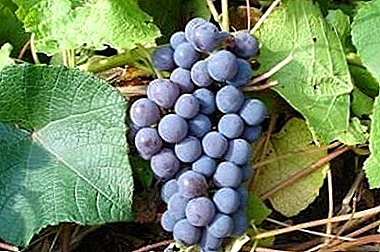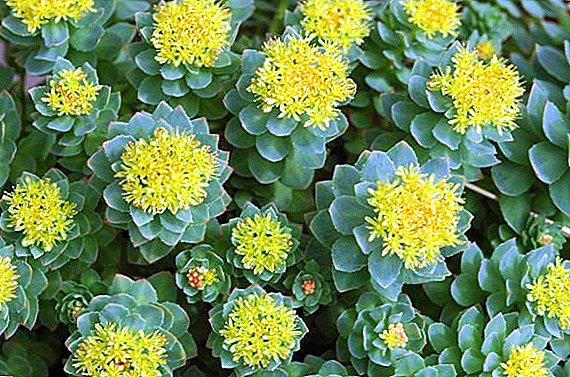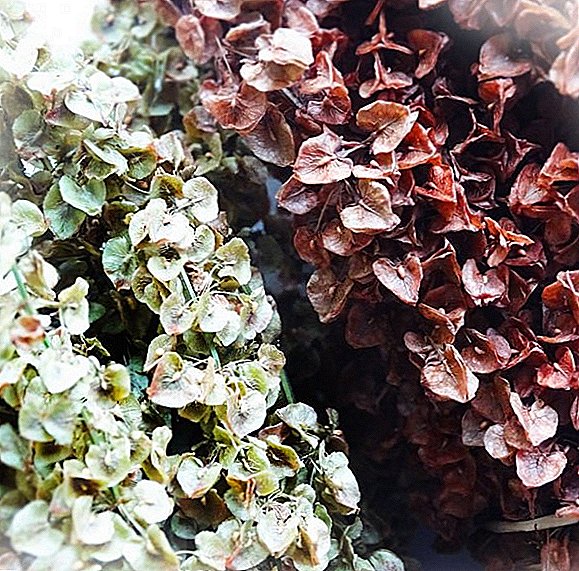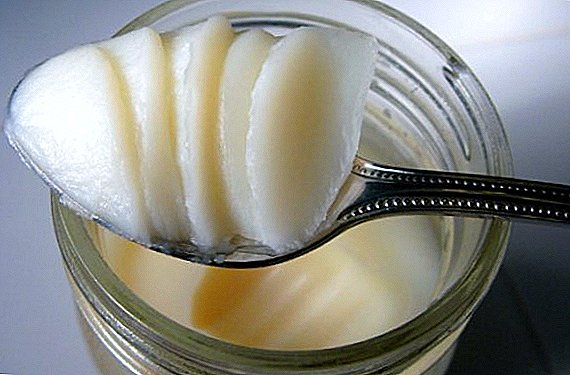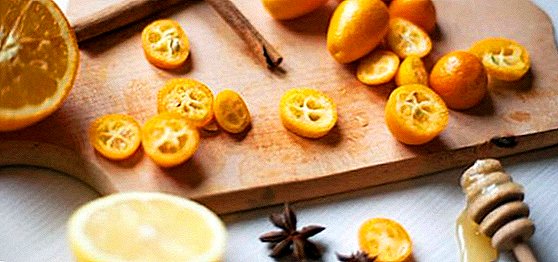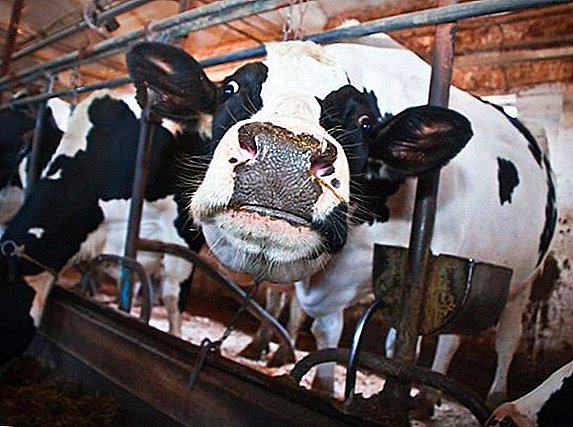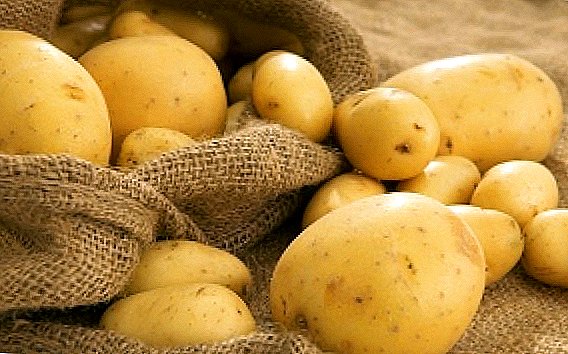
Lemon basil is a unique plant that has all the qualities of basil culture and the aromatic properties of citrus fruits, which makes it a bright decoration of meat and fish dishes, desserts and pastries.
In many countries, lemon basil is used not only as a seasoning, but also as the main component of dishes and side dishes.
This plant does not lose its valuable properties after drying or freezing. The use of lemon basil in food can significantly enrich the human diet with beneficial nutrients and vitamins. You will recognize perennial or annual basil with a delicious lemon scent.
Botanical description and vegetation period
Productivity reaches 300 grams from one bush. The plant is used in fresh, dried and canned form. Seeds have the ability to remain viable for 4-5 years. Growth period 45-60 days. This variety is not frost resistant.
Story
The homeland of lemon basil is South Asia, Africa, China. The plant got to Europe in the middle of the eighteenth century, from where it had already spread to Russia by the beginning of the nineteenth. Initially, lemon basil was cultivated as a bactericidal and anti-inflammatory agent, firmly securing the status of a medicinal plant.
By the end of the nineteenth century, lemon basil was used in canning vegetables and for decorating fruit desserts.
Appearance
Lemon basil has a branched straight stalk up to 40 cm high. The root system is developed moderately, compactly, represented by a single white thin root with multiple ramifications. The leaves are lemon-green, light green, oblong, with serrated edges and sharp tips, covered with small short hairs, have a pronounced citrus scent.
Two-lipped flowers of white or light yellow color grow from the axils of the apical leaves. Flowering is long, from 2 weeks to one and a half months. As a result of flowering a fruit is formed, consisting of four nuts, containing brown-brown small seeds.
A photo
In the photo you will see what this plant looks like:





Differences from other species and varieties
- The bright citrus aroma of the land part of the plant is inherent only in this variety.
- The smell and taste allow using only lemon basil in the preparation of desserts, berry and fruit dishes.
- Unlike the bushy basil, which grows in the form of a large and magnificent spherical bush, lemon basil grows in the form of an elongated low bush up to 40 cm in height.
- Unlike Turkish basil, which has a sweet aroma and small leaves, and Mexican basil with cinnamon aroma and large red leaves, this variety has a citrus aroma and leaves in the form of narrow ovals.
- Unlike Thai basil, the taste of which resembles pepper, and the color of the plant is red, this basil is light green and has a lemon flavor.
- Unlike wild and purple varieties with purple flowers, lemon variety has white or white-yellow flowers.
- Cuban basil has spotted foliage, and lemon basil leaves have a solid green color.
Lemon basil, unlike all other varieties, contains in its composition essential oils, similar to citrus essential oils.
Healing and beneficial properties
- Normalization of the cardiovascular system.
- Stimulation of the gastrointestinal tract by increasing the production of intestinal juices and enzymes.
- Pronounced tonic effect, improved mood, improved attention.
- Reducing cholesterol levels in the blood.
- Preventing the development of cancer.
- Strengthening immunity.
- Removal of muscle spasm, elimination of toxins.
- Strengthening cartilage tissue.
- Increase skin plasticity by stimulating the production of collagen.
- Weight reduction due to limonel - a component of essential oils that causes an acceleration of metabolism.
Chemical composition per 100 grams of product
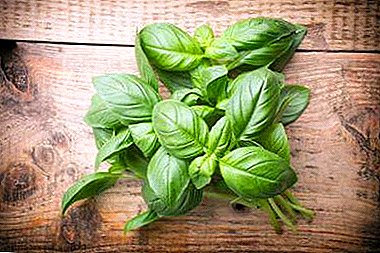 Calorie content - 27 Kcal.
Calorie content - 27 Kcal.- Water - 91 g
- Carbohydrates - 4 years
- Protein - 3.7 g
- Fat - 0.3 g
- Unsaturated fatty acids - 0.04 g
Trace elements:
- dietary fiber - 0.6 g;
- sodium, 4 mg;
- potassium - 278 mg;
- calcium 16 mg;
- phosphorus - 54 mg;
- manganese - 0.89 mg;
- iron - 3.4 mg;
- selenium - 0.3 mg;
- copper - 237 mcg.
Vitamins:
- thiamine - 0.03 mg;
- B2 - 0.076 mg;
- B9 - 76 µg;
- ascorbic acid - 17 mg;
- tocopherol - 0.7 mg;
- phylloquinone - 414 mcg;
- Niacin - 0.9 mg;
- choline - 4 mg;
- retinol - 265 mcg;
- B5 - 0.3 mg.
Contraindications
- Individual intolerance.
- Fever.
- Pregnancy and lactation.
- Elevated blood sugar.
Where to use and how to apply?
 Lemon basil is used in fresh, dried and canned form. Due to its citrus taste and aroma, the range of use is expanded with fruit and berry dishes, desserts and baked goods, which is not typical for the consumption of other varieties.
Lemon basil is used in fresh, dried and canned form. Due to its citrus taste and aroma, the range of use is expanded with fruit and berry dishes, desserts and baked goods, which is not typical for the consumption of other varieties.
In its raw form, it is used to make salads and sandwiches, marinated as an ingredient in marinade, and dried in it, for adding to meat and fish dishes, side dishes and sauces. Also, the leaves of lemon basil serve as a beautiful decoration of ready-made dishes.
Lemon basil harmonizes well with:
- white varieties of fish;
- pork;
- potatoes;
- carrots;
- vinegar;
- rosemary;
- mint.
How to care when grown in open field?
- Temperature. Lemon basil is a heat-loving plant. The optimum temperature for growing is 25-28 degrees during the day, and 20-22 degrees at night. Seeds are planted in warm soil.
- Watering. The soil is watered as the upper layers of the soil dry, keeping the beds moist but not over-wetting. Watered with warm settled water (28-30 degrees).
- Shine. The minimum duration of a day is 7 hours. Planted seeds before germination can be covered with a dark protective material. With a lack of lighting, this variety will slowly grow and lose its characteristic flavor.
- Feeding. The soil for growing this variety must be enriched with mineral fertilizers at least twice during the growth period - during the emergence of seedlings and at the beginning of flowering. Phosphorus and potassium fertilizers (superphosphate, 20 grams per 10 liters of water), wood ash or compost (1 bucket per bed) are preferred.
- Loosening. It is carried out after each irrigation, since the absence of loosening will lead to acidification of the soil.
- Weeding It is recommended to carry out at least 2 times in ten days, especially carefully remove weeds with a highly developed root system.
- Thinning. When the seedlings reach a height of 10-15 cm, they are thinned to a distance of 20 cm between plants and at least 40 cm between rows of beds.
- Topping. It is carried out when the seedling has more than 6 true leaves. Thanks to pinching the bush will grow in width and will not only reach up.
Peculiarities of home care
 At home, a better temperature is observed, which often leads to an excessive growth of basil. In this case, regularly pinching and removing the emerging buds in order to avoid unwanted flowering.
At home, a better temperature is observed, which often leads to an excessive growth of basil. In this case, regularly pinching and removing the emerging buds in order to avoid unwanted flowering.- It is required to carry out additional enrichment of the soil with mineral fertilizers, as the variety is picky about soil fertility. For planting it is preferable to use ready-made soil.
- When grown at home, it is better to choose window sills than balconies, and not to allow through-flow of air. The plant does not tolerate the wind.
- When grown at home, watering, thinning and loosening the soil are carried out according to the same rules as when grown on open ground.
Planting and breeding
Seeds
- Sowing of seeds produced in April in the seedling boxes at a depth of 1 centimeter.
- The distance between the rows is 5-6 centimeters.
- After sowing, the soil is lightly tamped and covered with a protective film.
- The film is removed daily for several hours at the warmest time of the day.
Seedlings
When the seedlings reach a height of 5 centimeters, it is transplanted into a greenhouse or open ground. The seedlings are planted in the ground no earlier than from the end of May, when the night temperature does not fall below 12 degrees. The landing site is protected from the wind, well lit most of the day.
Cuttings
Lemon basil is well propagated by cuttingFor this, the sliced parts of the stem are placed in water for 1 week, and after the appearance of the roots, they are planted in the ground, which allows a significant increase in yield growth.
Harvesting rules
 Harvesting of greenery is carried out when the stems reach a length of at least 15 centimeters (from the end of July). The leaves are carefully separated one by one, until there are 5-6 leaflets left on the stem, through which it will let the side shoots. During the season can be made up to 4 trim.
Harvesting of greenery is carried out when the stems reach a length of at least 15 centimeters (from the end of July). The leaves are carefully separated one by one, until there are 5-6 leaflets left on the stem, through which it will let the side shoots. During the season can be made up to 4 trim.
The flowering of basil is not allowed (the buds must be systematically removed), since in this case the leaves become hard and unfit for food.
Collected foliage is dried in the shade and in the open air, or whole bundles of basil are tied and hung from the ceiling. Dried lemon basil is stored for up to one and a half years.
Where to buy seed?
Seeds can be bought in paper bags of 2 grams in online stores or in gardening stores in Moscow and St. Petersburg.
The price ranges from 13 to 28 rubles and on average is 20.5 rubles. Seedlings are purchased mainly from private gardeners, the price for 1 sapling ranges from 15 to 45 rubles (the average price is 30 rubles).
When buying, pay attention to the appearance of the seeds (they must not be dry, have no damage, a rich brown-brown color). When buying seedlings check the integrity of the root system and the tops of the plant.
Diseases and pests
Lemon basil is affected:
- Fusarium;
- gray rot;
- black leg.
This is manifested by decay and gradual drying of the roots and leaves of the plant.
Control measures include following the rules:
- crop rotation;
- regular weeding;
- thinning and loosening;
- treatment with infusion of onion peel or fungicides at the first signs of infection.
Compliance with the simple rules of care and cultivation of this crop allows you to achieve a long and high yield in the garden, greenhouse and at home, it is beneficial to decorate any dish and to prevent many infectious and chronic diseases.


 Calorie content - 27 Kcal.
Calorie content - 27 Kcal. At home, a better temperature is observed, which often leads to an excessive growth of basil. In this case, regularly pinching and removing the emerging buds in order to avoid unwanted flowering.
At home, a better temperature is observed, which often leads to an excessive growth of basil. In this case, regularly pinching and removing the emerging buds in order to avoid unwanted flowering.